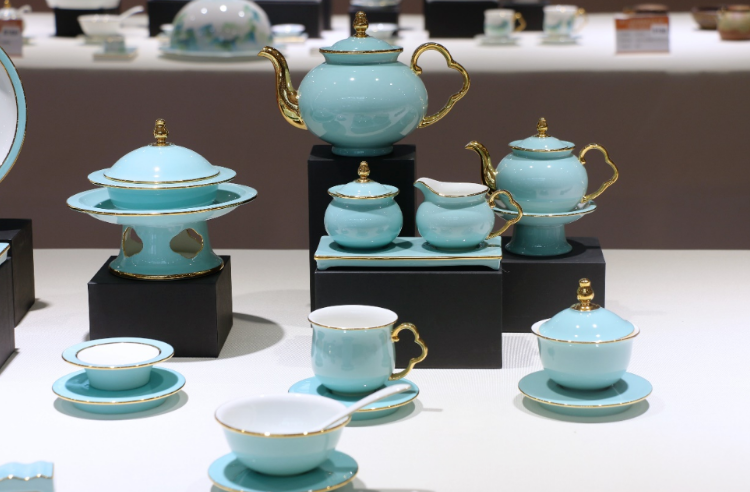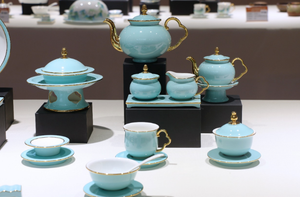
Inspection of ceramic export thermal stability test Inspection and certification service for factory audits and inspections
Ceramics are products made from clay or porcelain clay through processes such as mixing, shaping, drying, and firing. They include various types such as pottery, stoneware, and porcelain. Their exquisite appearance and rich colors are highly favored by consumers both at home and abroad, making the quality inspection and export certification of ceramic products particularly important. In the ceramic inspection process, the thermal stability test is a key item for evaluating whether the glaze or body of the product will crack, directly affecting the safety of product use and export compliance. This article will systematically introduce the thermal stability test methods and certification standards implemented by inspection companies during the inspection and factory verification of ceramics.
I. Overview of Thermal Stability Test
The thermal stability test is an important indicator for determining whether ceramic products will experience glaze cracking or body cracking under normal usage conditions during the inspection process. Products that meet the quality certification requirements are generally able to pass this test.
The inspection company divides the thermal stability test into two methods:
Thermal shock resistance test (passed through heat shock test)
Anti-fade crack resistance test (tested by moisture absorption expansion)
Generally speaking:
Products with a high water absorption rate need to undergo both thermal shock resistance and glaze cracking resistance tests simultaneously.
Products with a low water absorption rate (≤ 0.5%) have a relatively small degree of moisture absorption and expansion. Therefore, they usually only require a thermal shock resistance test.
II. Inspection Method of the Inspection Company
(1) Thermal Shock Resistance Test
Sample Preparation: Select 5 (for Chinese, American, Russian, etc. standards) or 7 (for European standards) intact samples, clean them and inspect their initial state.
Water container setup: Use a container with water temperature controlled at 20 ± 2℃. The ratio of water volume to sample weight should be no less than 10:1 (some standards are 8:1 or 5:1). Ensure that the water temperature does not exceed 29℃ after the sample is rapidly cooled, and the water surface should be more than 13mm above the sample.
Heating treatment: Place the sample in an oven, raise the temperature to the specified level (varies according to different factory inspection standards), and maintain the temperature for at least 20 minutes to ensure a uniform temperature.
Rapid cooling and inspection: Quickly transfer the sample to water for cooling until it reaches the water temperature. Remove it, dry it, and apply the staining solution. Check for any cracks.
Comparison of inspection and certification standards of various countries:
European standard: Start from a temperature difference of 100℃, and increase by 20℃ each time until reaching 200℃.
American standard: Start at 149℃, increase by 15℃ each time, until reaching 266℃.
Chinese standard: The temperature difference is set according to the type of porcelain. For example, the temperature for bone china is 140℃, for fine porcelain it is 180℃, and for heat-resistant porcelain it is 400℃, etc.
(2) Resistance to Fretting Test
Sample Preparation: Clean the samples and check their integrity. Prepare them in accordance with the standard quantity (7 pieces in Europe, no less than 10 pieces in the United States).
Pressure vessel setup: Place the sample on the support, ensuring that the distance from the water surface is no less than 5 cm. Leave a gap between the samples to facilitate steam penetration.
Pressure increase and holding pressure: Within 1 hour, raise the steam pressure to 340 kPa. According to European standards, hold the pressure for 2 hours; according to American standards, hold the pressure for 1 hour.
Pressure reduction and inspection: Quickly depressurize to atmospheric pressure, cool the sample, and then check for any cracks.
Repetition test: The European standard is repeated 7 times; for the American standard, the pressure is gradually increased to 1700 kPa and the sample's fracture situation is recorded.
III. Evaluation and Certification Expression of Inspection Results
1. Expression of Thermal Shock Resistance Results
Chinese standard: Represented by the number of samples that passed the test.
American standard: Record the condition of the sample after each test in detail, and distinguish between body cracking and glaze cracking.
European standard: Use the following calculation formula:
∑(Temperature difference) ×Number of explosions /Number of unexploded grenades)
Total number of samples
Total number of samples
∑(Temperature difference × Number of exploded grenades / Number of unexploded grenades)
Multiply the non-explosive samples by the maximum temperature difference. The result is expressed as "n hours +" or "n hours", and the "+" indicates that there were samples that did not explode.
2. Results of resistance to glaze cracking
European standard: ∑(Pressure-bearing time) ×Number of explosions /Number of unexploded charges)
Total number of samples
Total number of samples
∑(Pressure holding time × Number of detonated charges / Number of unexploded charges)
The non-explosive samples are multiplied by the maximum pressure-bearing time, and the result is expressed as "n hours +" or "n hours".
American standard: The average explosive pressure is used as the evaluation criterion. The weighted values of each test pressure and the number of samples that exploded are calculated. Samples that did not rupture at 1700 kPa are regarded as having ruptured at 2070 kPa.
IV. Summary
Ceramic inspection is a crucial step to ensure product quality and compliance with export certification requirements. The thermal stability test, as a core item in the factory inspection, can effectively identify potential defects in the products and reduce the risk of market returns through scientifically and systematically conducted tests on thermal shock resistance and glaze cracking resistance. Inspection companies must strictly follow international standards to ensure that each batch of ceramic products remains structurally intact and safe to use under thermal stress conditions, helping enterprises obtain international quality certifications and enhance their product competitiveness.
Share this product

Inspection of ceramic export thermal stability test Inspection and cer
Ceramics are products made from clay or porcelain clay through processes such as mixing, shaping, drying, and firing.
